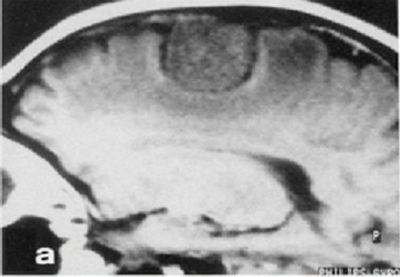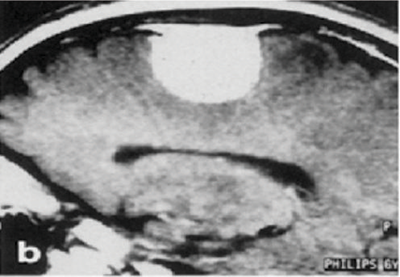
GADONIRAY
Gadodiamide Injection USP
287 mg/mL (0.5 mmol/mL)
Most trusted and dependable
A paramagnetic Non-ionic, Linear & Non protein binding Gadolinium based contrast agent (GBCA) for use in MRI.
- Non-ionic low osmolar gadolinium based contrast agent.
- Easy to detect and visualize area with disruption.
- Gadodiamide does not cross the intact blood brain barrier, hence it does not accumulate in normal brain tissue or in lesions.
- Gadodiamide decrease T1 & T2 relaxation time in tissues where it distributed.
| GADONIRAY | |||
| Composition | Each ml Gadodiamide Injection contains 287 mg of Gadodiamide. | ||
| Pack | 10 ml Vial | 20 ml Vial | |
| Total Concentration of Gadodiamide | 2.87g | 5.74g | |
| Density (g/ml) | 1.14 | 1.14 | |
| Specific Gravity | 1.15 | 1.15 | |
| Viscosity @ 20℃ @ 37℃ |
2.0 mPas 1.4 mPas |
||
| Osmolality at 37℃ | 789 mOsmol/kg | ||
| GADONIRAY has osmolality approx. 2.8 times that of plasma at 37℃ and is hypertonic under condition of use. | |||

Parasagital frontal meningiorna a Sagittal TIWI.

Gadodiamide-enhanced TIWI better domonsrates contours and meningeal attachment of the tumour. Surrounding oedema is better differentiated from the homogeneously enhancing tumour.
WARNING AND PRECAUTIONS
- Nephrogenic systemic fibrosis : Gadolinium based contrast agents increase the risk of nephrogenic systemic fibrosis (NSF) among patients with impaired elimination of drug. Screen patients for acute kidney injury and other condition that may reduce renal function.
- Gadodiamide must not be administered by intrathecal route.
- Before any contrast medium is injected, the patient should be questioned for a history of allergy (e.g. seafood allergy, hay fever, hives), sensitivity to contrast media and bronchial asthma as the reported incidence of adverse reactions to contrast media is higher in patients with these conditions and premedication with antihistamines and/or glucocorticoids may be considered.
- During the examination, supervision by a physician is necessary. If hypersensitivity reactions occur, administration of the contrast medium must be discontinued immediately and if necessary specific therapy instituted. A venous access should thus be kept during the entire examination. To permit immediate emergency countermeasures, appropriate medicinal products (e.g. epinephrine and antihistamines), an endotracheal tube and a respirator should be ready on hand.
- Adequate and well controlled studies in pregnant women have not been conducted. GADONIRAY should only be used during pregnancy if the potential benefit justifies the potential risk to the fetus. It is not known whether this drug is excreted in human milk. Because many drugs are excreted in human milk, caution should be exercised when GADONIRAY is administered to a nursing woman.
ADVERSE REACTION
| Application Site Disorders: | Injection site reaction. |
| Autonomic Nervous System Disorders | Vasodilation. |
| Body as a Whole-General Disorders | Anaphylactoid reactions (characterized by cardiovascular, respiratory, and cutaneous symptoms), asthenia, chest pain, fatigue, fever, hot flushes, malaise, pain, rigors, syncope, feeling hot. |
| Cardiovascular Disorders : | Cardiac failure, rare arrhythmia and myocardial infarction resulting in death in patients with ischemic heart disease, flushing, deep thrombophlebitis. |
| Center and Peripheral Nervous System Disorderrs : | Aggravated migraine, ataxia, convulsions (including grand mal), abnormal coordination, aggravated multiple sclerosis (characterized by sensory and motor disturbances), paresthesia, tremor. |
| Gastro-Intestinal System Disorders: | Abdominal pain, diarrhea, eructation, melena, dry mouth, vomiting. |
| Hearing and Vestibular Disorders: | Tinnitus. |
| Musculoskeletal System Disorders: | Arthralgia, myalgia, Psychiatric Disorders: Anorexia, anxiety, personality disorder, somnolence. Respiratory System Disorders: Rhinitis, dyspnea. |
| Skin and Appendage Disorders: | Pruritus, rash, erythematous rash, skin discoloration, sweating increased, urticaria. |
| Special Senses Other, Disorders: | Taste loss, taste perversion. Urinary System Disorders: Acute reversible renal failure. In patients with renal insufficiency: acute (nonreversible) renal failure, increase in blood creatinine. |
| Vision Disorders: | Abnormal vision pediatrics. |
| Liver and Bilary System Disorders: | Abnormal hepatic function. |
DOSAGE AND ADMINISTRATION
The recommended dose of GADONIRAY for Adults as well as Pediatric Patients (2-16 years) is 0.2 mL/kg (0.1 mmol/kg) administered as a bolus intravenous injection.
INDICATIONS
GADONIRAY is indicated for intravenous use in MRI to visualize lesion with abnormal vascularity (or those thought to cause abnormalities in the blood-brain barrier) in the brain (intracranial lesion), spine, and associated tissues as well as within the thoracic (noncardiac), abdominal, pelvic cavities, and the retroperioneal space but it is not used for cardiac studies.
CONTRAINDICATION
- Hypersensitivity to Gadoniray or any product containing gadolinium.
- Chronic, severe kidney disease.
- Acute kidney injury.
OVERDOSE
GADONIRAY can be removed by haemodialysis. However there is no evidence that haemodialysis is suitable for prevention of nephrogenic systemic fibrosis (NFS).
STORAGE:
Store at a controlled room temperature. Do not refrigerate, protect from light. Keep out of reach of children.
PRESENTATION:
10ml, 15ml, 20ml Vials.
